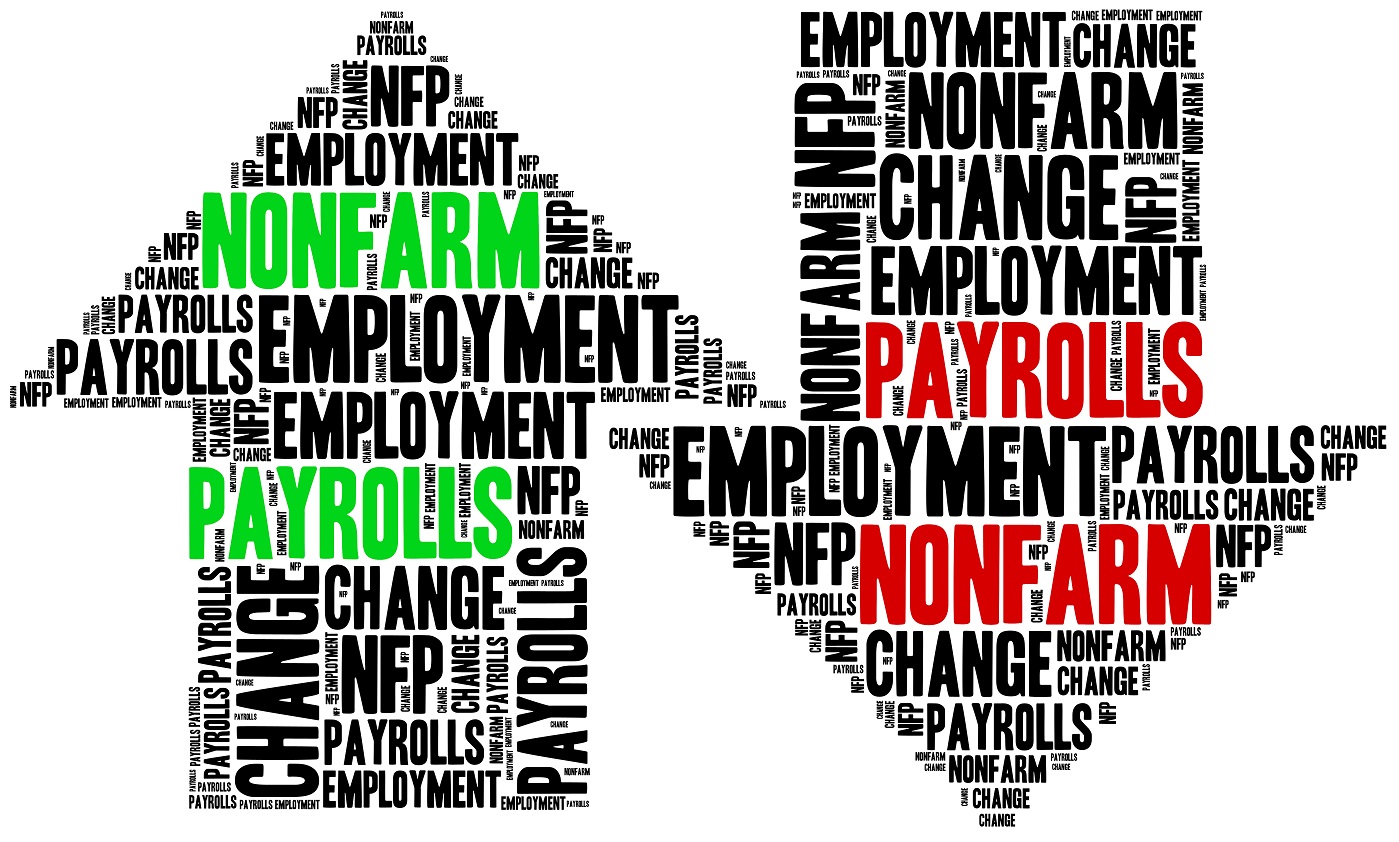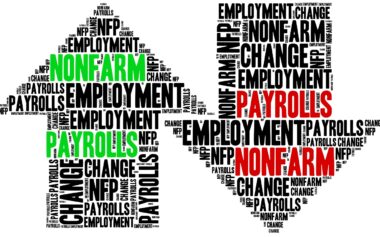How to Interpret Non-Farm Payrolls

Without Getting Whipped Around!
In the world of Australian forex trading, the US Non-Farm Payrolls (NFP) report is a major event. It can cause currency pairs like AUD/USD, EUR/USD, and GBP/USD to swing wildly.
This can leave traders with significant losses from sudden reversals and false breakouts.
Experiencing the impact of an NFP-driven move can be harsh. Yet, with the right approach, traders can avoid these pitfalls.
This guide aims to equip Australian traders with the knowledge to navigate NFP releases effectively.
It will cover how to interpret the data and why it’s so significant to global markets. We’ll discuss how to distinguish meaningful moves from noise.
Also, how to position yourself before the release and avoid emotional traps that lead to losses.
Understanding the Non-Farm Payrolls Report
The Non-Farm Payrolls report is a monthly indicator from the US Bureau of Labor Statistics.
It’s released on the first Friday of each month, unless a public holiday delays it.
The report gives a detailed view of the US labour market, excluding certain sectors.
Three key figures in the report drive the sharpest market reactions.
The headline Non-Farm Employment Change shows job additions or losses.
The Unemployment Rate measures jobless individuals actively seeking work.
Lastly, Average Hourly Earnings provides insight into wage inflation, influencing Federal Reserve decisions.
The NFP report’s impact on US monetary policy is significant for forex traders.
The Federal Reserve’s dual mandate includes maintaining price stability and maximising employment.
Employment data like NFP shapes interest rate expectations, affecting currency valuations worldwide, including those involving the Australian dollar.
Why Australian Traders Must Pay Attention to NFP
Australian forex traders might wonder why a US employment report matters for trading pairs like AUD/USD. The answer is the interconnected nature of global financial markets.
The US dollar’s role as the world’s reserve currency means USD fluctuations affect all major currency pairs, including AUD.
The mechanism through which NFP affects currency markets is interest rate expectations.
A strong NFP report, with rising wages, signals a robust labour market. This could fuel inflation, leading to higher US interest rates and a stronger USD.
On the other hand, a weak NFP report might suggest economic softness, leading to rate cuts and a weaker USD.
For traders focusing on AUD/USD, these dynamics create both opportunities and risks.
A strong USD following a bullish NFP report can weigh on the Aussie dollar.
Yet, the relationship isn’t always straightforward. Sometimes, risk sentiment plays a significant role.
For instance, an extremely strong NFP could spark fears of aggressive Fed tightening, potentially dampening risk appetite and hurting commodity currencies like the AUD despite USD strength.
A Strategic Approach to Trading NFP Releases
Traders often feel a mix of excitement and caution when NFP releases come around.
They know the profit opportunities but also the risks.
Success in trading these events doesn’t come from guessing the exact numbers.
It’s about having a solid plan to understand and react to the data, aligning with broader market trends.
Many traders rush into positions as soon as the numbers are out.
The first minutes see extreme price swings due to fast trading by algorithms and big players. This can lead to false signals and unpredictable price movements.
It’s better to wait 15 to 30 minutes for the market to settle.
This patience helps avoid getting caught in sudden liquidity gaps where spreads widen and stop-loss orders are at risk.
Understanding the data in relation to market expectations is key.
Markets react more to how the numbers compare to forecasts than to the numbers themselves.
For instance, if jobs are expected to rise by 200,000 and they do by 250,000, the USD might rally, even if growth is slower than before.
Traders should always check the forecasts beforehand and know what deviations mean.
Revisions to past data are also critical.
The NFP report often adjusts previous figures, changing how the current data is viewed.
A strong headline number might be less impressive if past figures are revised down.
A modest beat can spark a stronger reaction if past data is revised up.
Looking at all three key metrics—employment change, unemployment rate, and wage growth—is essential.
Sometimes, the headline jobs figure looks good but wage growth is weak. Other times, unemployment falls but labour force participation drops.
These mixed signals can cause confusing price action, highlighting the need for a complete view before trading.
Managing Risk Around High-Impact News Events
The extreme volatility around NFP releases requires careful risk management.
Even seasoned traders can get caught out, making it vital to manage position sizes and stop-loss orders carefully.
Reducing position sizes is a good strategy when trading NFP.
The big moves might tempt traders to increase leverage, but the unpredictable nature of news-driven price action can lead to losses.
Smaller positions help traders survive the initial volatility without risking too much.
Widening stop-loss orders is another wise move.
Tight stops can get taken out by the erratic price swings, only to see the market move as expected later.
Giving trades more room can prevent early exits and protect against big losses.
Some traders choose to avoid new positions before NFP, focusing on managing existing ones or waiting for clearer opportunities.
This approach acknowledges the uncertainty and risk around major news events, not suitable for all trading styles.
Traders who do well around NFP releases are those who prepare thoroughly and execute with discipline.
They understand the report’s importance, have a clear plan for different outcomes, and keep strict risk controls, even when tempted by volatility.
The Current Economic Backdrop for 2025-2026
As we navigate 2025 and approach 2026, several macroeconomic factors are influencing NFP releases’ impact on currency markets.
The US economy is balancing cooling inflation with maintaining growth.
The Federal Reserve is adjusting its monetary policy to avoid premature easing or excessive tightening.
NFP reports now hold greater importance as indicators of the labour market’s resilience.
Strong job growth and moderate wage increases support higher interest rates, bolstering the USD.
On the other hand, labour market decline could lead to rate cuts, potentially weakening the dollar.
Australian traders must consider US-centric developments alongside domestic factors.
These include commodity prices, China’s economic performance, and the Reserve Bank of Australia’s policy.
The AUD’s sensitivity to risk means US economic data like NFP can influence its value more than domestic factors.
Final Thoughts on Trading NFP Effectively
Trading NFP releases effectively requires more than just understanding the numbers.
It demands an appreciation for market information processing, participant reactions, and strategic positioning to benefit from volatility.
Effective traders approach these events with patience, waiting for the initial frenzy to pass before investing.
They verify multiple data points within the report, not just headlines.
They adhere to strict risk management to survive unexpected price movements.
Viewing each NFP release as part of a larger narrative about the US economy’s health is key.
By adopting a measured, informed approach, Australian forex traders can navigate Non-Farm Payrolls reports effectively.
This transforms what many see as a dangerous obstacle into a strategic opportunity.
Disclaimer
Trading forex involves risk and may not be suitable for all investors. Past performance is not indicative of future results. Always conduct your own research before trading.
The information, strategies, techniques and approaches discussed in this article are for general information purposes only. The Trading Coach International does not necessarily use, promote nor recommend any strategies discussed in this article. The information in this article may not be suitable for your personal financial circumstances and you should seek independent qualified financial advice before implementing any financial strategy. The Trading Coach International is not a financial advisor and does not have AFS registration.


















